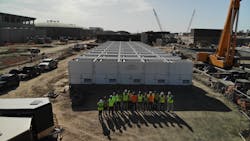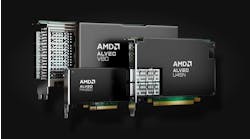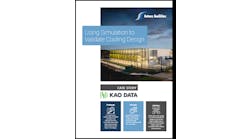How Microgrids Help Data Centers Mitigate and Adapt to Climate Change
We’ve already seen a significant rise in the intensity and frequency of extreme weather events, which are causing widespread power outages and disrupting the critical infrastructure our communities rely upon.
Clearly, urgent, timely action must be taken to mitigate climate change and slow the effects of global warming. We must also adapt just as quickly to the consequences of climate change already being felt if we want to build a more resilient society. As the Intergovernmental Panel on Climate Change stated in their 2022 Climate Change Report that “the window of opportunity to enable climate resilient development is narrowing rapidly.”
Mitigation
In order to mitigate climate change, significant steps to reduce carbon emissions must be taken very quickly. To do so, we must transition away from emission-heavy fuels such as coal and diesel. These materials not only produce greenhouse gasses but also cause local air pollution and its negative public health impacts.
In an ideal scenario, we would produce all of our power through renewable energy sources such as solar and wind power. But technology has yet to reach the point where renewables alone can sufficiently meet our high energy demands.
While emission-free energy is our common goal, we can’t afford to wait to implement the perfect solution when lower-emitting alternatives, such as natural gas and renewable natural gas, can buy time and make an immediate impact. Natural gas can serve as an integral part of the energy transition until renewable energy technology, coupled with energy storage at scale, develops to be dispatchable 24/7 and is cost-effective. Letting perfect be the enemy of good will only hold us back in the fight against climate change.
Join Rich Miller on September 29th at 1 p.m. EST as he and his guest explore microgrid applications for data centers.
Adaptation
Furthermore, mitigating the causes of climate change won’t be enough to address the impacts of climate change. We must also prepare our communities and infrastructure to adapt to the extreme weather and power outages that are already being thrown our way.
Longer, more frequent power outages have increased in frequency in the United States over the past decade. Blackouts from extreme weather events such as Winter Storm Uri, in which over 69% of Texans lost power and hundreds lost their lives, are clear signals that action must be taken immediately.
In order to adapt, our infrastructure, buildings and operations need to be more resilient. We must anticipate extreme weather events and be prepared to withstand the disruptions they produce. Microgrids that provide 24/7 backup power can offer the local reliability needed for communities to withstand outages caused by climate change-induced events. Such systems can be applied to critical operations such as hospitals, data centers, water utilities and more. In a notable recent application, Microsoft announced that in order to back up their new San Jose data center, they would be using microgrids supplied by renewable natural gas in partnership with Enchanted Rock—a much cleaner alternative to diesel backup.
Striking The Balance When It Comes To Climate Change Response
Efforts to reduce emissions and build resiliency can be pursued simultaneously. While backup power is not a new concept, the data center industry has traditionally relied upon diesel generators, which produce emissions harmful to both the environment and human health.
By coupling microgrid services with a cleaner, yet still reliable fuel such as natural gas, data centers can stay resilient while at the same time reducing their carbon footprints and improving local communities. Solutions that are both preventive and responsive to climate change are already available. These are the solutions we must look to, as they have the potential to make an immediate difference in the way we build and operate our built environments.
Allan Schurr is CCO of Enchanted Rock. Contact them to learn more about natural gas powered microgrids.





